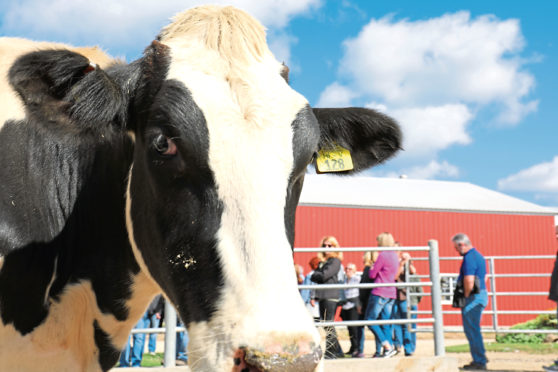In Wisconsin, the state touted as “America’s Dairyland”, the milk business has turned sour.
A quarter of the country’s dairy producers are being squeezed, and the pressure is coming from every direction.
Just like the dairy industry here, farmers face criticism over greenhouse gas emissions or their use of water resources, and many practices are condemned as unethical.
However, the challenge of simply finding enough people willing to milk the cows dwarfs every other worry.
The consequence is that mental health issues are on the rise, suicide rates have increased and many farmers are simply giving up.
According to the state Department of Agriculture, Trade and Consumer Protection, Wisconsin lost 551 dairy farms last year after losing 638 in 2018 and 465 in 2017.
With just 150 cows per herd, the average family-run dairy farm in this state is considerably smaller than the national average of 251 and government appears to believe that scale is a factor in an escalating problem.
Three months ago, at the World Dairy Expo in Madison, President Trump’s Secretary of Agriculture, Sonny Perdue, said he didn’t know if the family dairy farm could survive as the industry moves towards a factory farm model.
“In America, the big get bigger and the small go out,” he said.
“I don’t think in America we, for any small business, have a guaranteed income or guaranteed profitability.”
About half an hour east of Madison, the state capital, Tina Hinchley is working harder than most to help dispel myths about the dairy industry.
Alongside her husband Duane she has an extra income running regular hands-on tours on the family farm, explaining how modern food production works.
Urban dwellers get up close to newly-born calves, try their hand at milking and are encouraged to ask questions on anything from GMOs to artificial insemination.
“By the time they leave here they’re more confident about going to the grocery store,” she says.
Money is tight on the Hinchley farm, but Tina’s overriding concern is the availability of labour and the impact of the Trump administration’s policies on immigrants.
As she walks round the farm giving calves a cuddle or pointing out the latest features of a recently-built cow barn, she struggles to avoid straying into politics.
“It’s a stressful situation,” she said.
“The immigrant kids go to school with our kids, they go to the grocery stores, and yes, maybe they send money home, but they’re helping out their families, they’re doing everything they can just to keep going.”
At the National Dairy Council, which is financed by farmers through milk levies, science officer Greg Miller worries about the limited scientific data available to the industry.
“The dairy industry is responsible for 2% of greenhouse gas (GHG) emissions in the US,” he said.
“Meeting sustainable criteria is going to be difficult. You can talk about GHG and water use but you also need to talk about the social and economic context of dairying. A billion people wake up across the globe and their livelihood is tied to the dairy sector, and if you take the livestock away, you’ll reduce GHG but people still need to be fed.”
There are differences, though, in production methods and standards between US and UK dairying, most noticeably the practice of tail docking of cows.
On the Hinchley farm, tails are docked with a rubber band right up to the spine, a practice which is banned in the UK.
Tina says it is carried out because she needs to do everything she can to keep her employees.
“If my high school workers get whacked in the face by a dirty tail and they have the choice of working in a mall instead and not put up with that, then I lose my employee.”
nnicolson@thecourier.co.uk
Nancy Nicolson’s visit was organised and funded by the US State Department.







